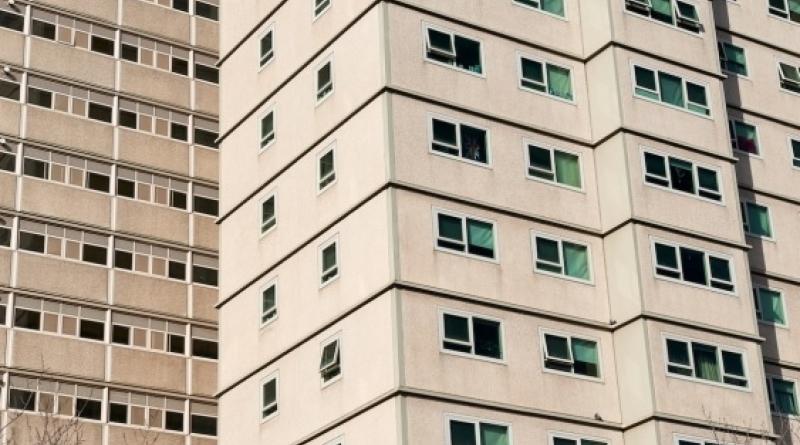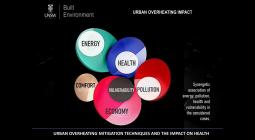Social housing temperatures in NSW exceed health and safety limits: study

Many low-income households can endure temperatures in their homes close to 40°C during summer and as little as 5°C during winter.
Many residents in social housing in New South Wales can experience alarming levels of winter underheating and summer overheating in their homes that do not meet standards for comfort and health, according to UNSW Sydney-led research funded by the Department of Planning and Environment and CRC for Low Carbon Living.
A research team from the School of Built Environment and the Department of Planning and Environment monitored 106 low-income dwellings in New South Wales during the winter and summer of 2018–2019. The team studied the impacts of outdoor temperature and housing characteristics, including indoor temperature and air quality, and surveyed the residents’ health and quality of life.
During summer, indoor temperatures reached 39.8°C and were above 30°C up to 62 per cent of the time in some residences. The minimum indoor temperatures during winter also dropped as low as 5°C in some homes and were below 18°C 93 per cent of the time.
Households also reported high levels of dissatisfaction with their indoor thermal conditions year-round. During summer, the majority of low-income households in western Sydney experienced higher indoor and outdoor temperatures than those who reside in the proximity of the coast, according to the study.
The recommended thermal discomfort threshold is 28°C for living rooms and 26°C for the bedroom, according to the Chartered Institution of Building Services Engineers (CIBSE). Meanwhile, The World Health Organization (WHO) recommends a temperature band of 18–24°C for thermal comfort and safety.
“Many social housing dwellings recorded indoor temperatures outside the recommended limits for safety and comfort for substantial periods,” says the study’s first author Dr Shamila Haddad.
Prolonged exposure to poor housing quality can have adverse health effects. Indoor overheating can lead to thermal discomfort and increase the risk of heat-related morbidity and mortality. Meanwhile, temperatures below 16°C may raise the risk of respiratory disease and vulnerability to infection from airborne pathogens.
“We know many people from low-income backgrounds are living in low-quality housing, and this impacts their health and quality of life,” says Scientia Professor Mat Santamouris, Anita Lawrence Chair in High Performance Architecture and senior author of the study.
Social housing tenants may be particularly vulnerable to health risks associated with poor air quality and building thermal performance. Risk factors for heat-related health issues, such as cardiovascular disease, tend to be more prevalent in low-income households. Social housing dwellings are also more likely to be located in areas with high exposure to the elements.
Most of the dwellings investigated in the study were built before 2000 and predate the introduction of building codes and minimum energy-efficiency standards at the national level. Mould and condensation, which are common issues in poor-quality dwellings, were also reported in 42 per cent of the residences.
“The housing quality is typically lower than general housing stock and can lack adequate ventilation and insulation, increasing the amount of heating and cooling needed to achieve comfortable and safe indoor temperatures,” Dr Haddad says.
The research also found many households experience energy poverty – where they struggle to afford the required energy services in their homes. Some used compensatory measures to minimise energy bills and escape overheated environments, including visiting shopping malls, seeking medical assistance, or skipping food and other essentials.
“Lower-income households may suffer from warmer homes during summer,” Dr Haddad says. “While thermal discomfort was reported, these low-income families limited their energy use by avoiding heating and cooling.
“As local and global temperatures continue to become more extreme, the findings suggest financially disadvantaged people living in poor-quality housing may be disproportionately affected.”
Improving thermal conditions in social housing
Indoor air temperature in naturally ventilated buildings highly depends on the quality of the building envelope and follows the pattern of the outdoor climate. With climate change expected to increase indoor overheating and discomfort further, there’s an urgent need to improve social housing dwellings to ensure healthy living conditions for residents and protect them from extreme temperatures, Dr Haddad says.
Improvements in building quality can reduce heating and cooling needs. Passive heating and cooling strategies, easy-to-apply insulation, materials and glazing are all cost-effective technologies that could be implemented to improve the thermal quality of housing while reducing energy demand.
“Enhancing housing energy efficiency can alleviate energy poverty and improve households’ health and wellbeing,” Dr Haddad says. “This should be the main goal of retrofit upgrades in the social housing sector.”
Dr Haddad says it would be more sustainable and cost-effective to prioritise refurbishing existing building stock over rebuilding. However, design standards must also be improved, and appropriate thermal performance mandated in the build quality of any new social housing construction.
More significant investment in urban heat mitigation could also minimise the impacts of poor-performing housing during warm periods. Results of previous studies in Sydney reveal that urban heat mitigation strategies, such as increasing green spaces and employing reflective materials for pavements and roofs, can reduce the peak ambient temperature by up to 3°C.
“In addition to housing quality, urban heat mitigation strategies also help decrease the health impact of very high temperatures, which would better protect the health of low-income people living in social housing,” Dr Haddad says.
Prof. Santamouris says other innovations could also help people from low-income backgrounds at risk of energy poverty, such as using smart meters to monitor indoor temperatures and supplying free electricity to occupants.
“Many European countries supply people from low-income backgrounds a certain level of fuel for free, or they give them a grant to buy electricity or fuel,” Prof. Santamouris says. “There used to be 50,000 deaths per year in the UK due to energy poverty. But now, because of these changes, this number has decreased dramatically.”
cover photo: Social housing tenants may be vulnerable to health risks associated with poor air quality and building thermal performance. Photo: Shutterstock.





